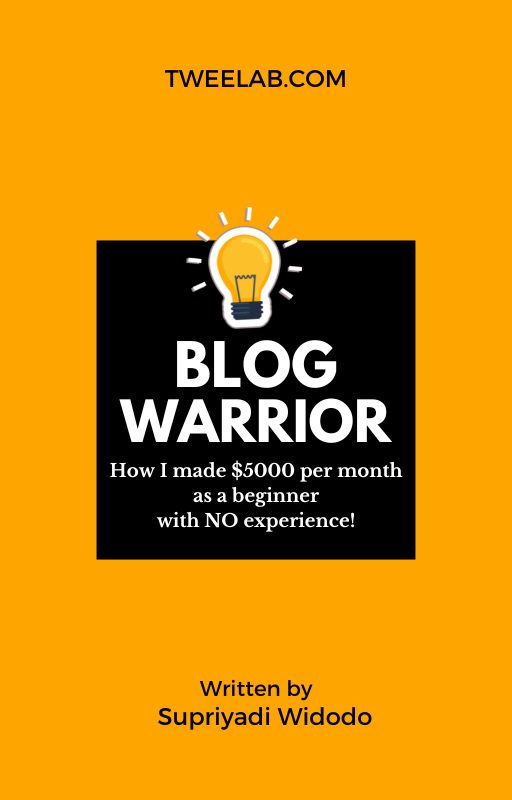I know what you’re thinking. Another article about social media strategy? Aren’t there enough of those already?
Table of Contents
But hear me out – this isn’t just another generic guide to posting on Instagram and Facebook. This is a comprehensive introduction to crafting a social media strategy specifically for your blogging brand.
Social media can be overwhelming, especially as a blogger trying to build your audience and increase engagement. It’s easy to get lost in the sea of hashtags and algorithms, but with the right approach, it can also be an incredibly powerful tool for reaching new readers and building community around your content.
In this article, we’ll break down the key components of a successful social media strategy for blogging, including identifying your target audience, choosing the right platforms to focus on, creating engaging content that resonates with your followers, and measuring the impact of your efforts.
So if you’re ready to take your blog’s social presence to the next level, let’s dive in!
Identifying Your Target Audience

Creating a successful social media strategy for blogging starts with identifying your target audience.
This involves creating personas, or fictional representations of the people you want to reach through your blog. These personas should be based on real data that you gather by conducting market research.
When creating your personas, consider factors such as age, gender, location, interests, and purchasing behaviors. Use this information to create detailed profiles of your ideal readers.
This will help you tailor your content to their specific needs and preferences.
Conducting market research is essential for understanding your target audience. Look at demographic data, consumer behavior patterns, and industry trends to identify what motivates your audience and what challenges they face.
By doing so, you’ll gain valuable insights into how to craft content that resonates with them and keeps them coming back for more.
Choosing The Right Social Media Platforms

Now that you have identified your target audience, it’s time to focus on choosing the right social media platforms. Think of these platforms as tools in a toolbox – each one has its unique purpose and function.
Just like how you wouldn’t use a hammer to screw in a nail, you shouldn’t be using every platform available just because they exist.
Maximizing engagement is crucial for any successful social media strategy tips. You want your content to reach as many people within your target audience as possible. To achieve this, it’s essential to understand each platform’s algorithm and tailor your posts accordingly.
For instance, Instagram prioritizes visually appealing content while Twitter favors text-based updates. By understanding these nuances, you can increase visibility and attract more followers.
Navigating algorithm changes can be challenging, but it’s part of the process when working with social media platforms. What works today may not work tomorrow – staying updated on new trends and features is key to maintaining relevance and success on these channels. Be open-minded and willing to adapt; experimentation is often necessary before finding what works best for your brand or blog.
Remember: don’t put all your eggs in one basket – diversify across multiple platforms to minimize risks associated with sudden changes or shifts in algorithms.
Keep in mind that selecting the right social media platforms requires careful consideration of both the type of content you create and where your target audience spends their time online. Maximizing engagement entails crafting tailored messages specific to each platform’s strengths, while navigating algorithm changes demands flexibility and willingness to experiment across different channels regularly.
As you move forward with implementing your strategy, remember that there are no shortcuts or magic formulas- consistent effort over time yields results!
Crafting Engaging Content For Your Followers

Creating content that resonates with your followers is the key to building a successful social media strategy.
One way to do this is through collaborations with other bloggers or businesses in your niche. Collaborating allows you to expand your reach and tap into a new audience while also providing valuable insights and ideas from others in your field.
Another effective method of creating engaging content is by incorporating User-Generated Content (UGC) into your posts. UGC can include anything from photos, videos, testimonials, or even comments left on previous posts. Not only does this add variety to your feed, but it also shows authenticity and builds trust with your followers as they see real people using and enjoying your products or services.
Remember to keep things fresh and interesting by experimenting with different types of content such as polls, quizzes, or live streams.
Always stay true to your brand’s values and mission when crafting each post.
By following these tips and consistently producing quality content, you’ll be sure to keep your followers engaged and coming back for more!
Establishing Your Brand Voice And Aesthetic

Let’s start by defining your brand’s voice – this is the way you’ll communicate with your audience and can include anything from the language you use to the tone of your posts.
Next, it’s time to create a visual identity that conveys your brand’s message to your followers. This includes everything from the colors you use to the type of graphics you post.
It’s important to make sure your visual identity is consistent so people know what to expect from your brand.
Finally, let’s put it all together to create a cohesive and recognizable social media presence!
Defining Your Brand Voice
Imagine scrolling through your social media feed and coming across a brand that uses different tones, language, and styles every time they post. It’s confusing and unappealing to the audience, right?
That’s why creating consistency in your brand voice is crucial for successful blogging. By defining your brand voice, you’ll establish a unique personality that reflects who you are as a blogger or business owner.
To start with, consider what sets you apart from others in your industry. What do people come to you for? Answering these questions will help you determine how best to craft your messaging and tone of voice.
Keep in mind that while it’s important to have some level of consistency in your message delivery, there may be times when you need to pivot or adjust accordingly based on feedback or market trends. Evolving brand voice does not mean abandoning everything about the original branding; instead, it means finding ways to stay relevant without losing authenticity.
Ultimately, the goal of defining your brand voice is to ensure that readers can identify and differentiate your blog among many other blogs out there by just reading one post or seeing one image. Branding is all about standing out from the crowd and conveying trustworthiness consistently over time.
With an established aesthetic and consistent brand voice, bloggers can build long-term relationships with their followers which helps them grow organically beyond just immediate traffic returns.
Creating A Visual Identity
Now that you’ve nailed down your brand voice, it’s time to create a visual identity that complements it. Visual branding is just as important as the words you use in conveying your message and personality to your audience. Your blog’s design should be consistent with your brand voice and aesthetic.
One of the first things you’ll want to do when creating a visual identity is selecting a color scheme. Color plays an essential role in how people perceive brands, so choosing colors that align with your brand’s values and messaging can help solidify your image in their minds.
Think about what emotions or feelings you want to evoke from readers when they visit your site – warm tones like orange and yellow may suggest energy and excitement, while cool blues might convey calmness and trustworthiness.
When designing visuals for your blog (whether it be logos, graphics, social media posts), make sure they all look cohesive by using similar fonts, imagery, and layouts. This consistency will further reinforce your brand’s presence online and make it easier for users to recognize you across different platforms.
With these tips in mind, you’re on track to creating a strong visual identity that supports the unique personality of your blog!
Utilizing Hashtags And Trends

Imagine you’re a sailor out at sea, looking for treasure. You have your compass and map to guide you, but what if there was a way to know exactly where the treasure is by following clues left by other sailors?
This is the power of hashtags and trends in social media strategy. Hashtags allow us to track conversations happening around specific topics on social media platforms like Twitter and Instagram. By using tools like hashtag analytics, we can see which hashtags are trending and use them strategically in our posts to reach a wider audience.
Trends forecasting takes this a step further by predicting future popular topics based on current data analysis. As a social media strategist, it’s crucial to stay up-to-date with these trends so that we can create content that aligns with our target audience’s interests.
Hashtag research and trend forecasting should be an ongoing process as audiences’ preferences change over time. By incorporating these tactics into our social media strategies, we can increase engagement and ultimately achieve our blogging goals.
Measuring The Impact Of Your Social Media Strategy

Now that you have a better understanding of how to use hashtags and trends in your social media strategy, it’s time to measure its impact.
Measuring analytics is crucial for determining what works and what doesn’t work when it comes to engaging with your audience. By analyzing metrics such as reach, engagement rate, and click-through rates, you can gain insight into which types of content generate the most interest.
Tracking conversions is another essential component of measuring the success of your social media strategy. This involves monitoring how many users take action after seeing your posts, whether it be clicking through to your blog or making a purchase on your website.
By tracking these conversions over time, you can determine which tactics are yielding the best results and adjust your approach accordingly.
To effectively measure the impact of your social media strategy, it’s important to establish clear goals from the outset. Are you trying to increase brand awareness? Drive traffic to your website? Generate leads? Whatever your objectives may be, make sure they are specific and measurable so that you can track progress over time.
With this data at hand, you’ll be able to fine-tune your strategy and optimize performance for even greater success in the future.
Staying Consistent And Adapting To Change

Like a ship navigating through the unpredictable waters of social media, staying consistent and adapting to change is key to success in the blogging world. It’s important to establish a clear brand identity and voice, but also maintain flexibility to adjust strategies as trends evolve.
Here are some tips for maintaining consistency while embracing new trends:
- Develop a content calendar with themes that align with your brand messaging
- Use analytics tools to track engagement and adjust content accordingly
- Incorporate emerging topics or hashtags into your content plan
Additionally, it’s crucial to stay up-to-date on new platforms and features within existing ones. For example, Instagram recently launched Reels which allows users to create short-form videos similar to TikTok. By embracing this trend and incorporating Reels into your strategy, you can reach a wider audience and stand out amongst competitors.
Maintaining consistency doesn’t mean being stagnant. As a social media strategist, it’s important to always be experimenting with new ideas and tactics while staying true to your brand values.
Remember: adaptability is just as important as consistency when it comes to achieving long-term success in the ever-changing landscape of social media.
Key Takeaways
- Identifying your target audience is essential for crafting a successful social media strategy for blogging. Create personas based on real data gathered through market research.
- Choose the right social media platforms based on your target audience and the type of content you create. Tailor your posts to each platform’s algorithm and strengths.
- Create engaging content by collaborating with other bloggers or businesses, incorporating user-generated content, and experimenting with different types of content.
- Establish your brand voice and aesthetic to maintain consistency and build trust with your followers. Define your brand’s voice and create a visual identity that aligns with it.
- Utilize hashtags and trends to reach a wider audience and stay relevant. Track analytics and measure the impact of your social media strategy to optimize performance.
- Stay consistent while adapting to change. Develop a content calendar, use analytics tools to track engagement, and incorporate emerging topics or hashtags into your content plan.
- Consider your target audience and the types of content you create when choosing the best social media platform for advertising your blog.
- Dedicate a sufficient amount of time to social media promotion, balancing it with content creation and measuring the effectiveness of your efforts.
- Paid social media ads can be effective in reaching a specific audience, but weigh the pros and cons before deciding on this approach.
- Handle negative comments or feedback with professionalism and empathy. Avoid engaging with trolls and respond to constructive criticism in a respectful manner.
- Consider creating a separate social media account for your blog to maximize its benefits and keep your personal and professional life distinct.
- Social media can have a significant impact on your blog’s success, with businesses that use it effectively seeing an average increase in revenue by 24%.
Frequently Asked Questions
What Is The Best Social Media Platform For Advertising My Blog?
As a social media strategist, it’s important to consider your target audience and the types of content you plan on promoting when choosing the best platform to advertise your blog.
For example, if your target audience is primarily professionals in a certain industry, LinkedIn may be the most effective platform for sharing your blog posts.
On the other hand, if your content is highly visual or geared towards younger audiences, Instagram or TikTok could be better options.
It’s also worth considering which platforms align with your brand image and values.
Ultimately, there isn’t one ‘best’ platform for advertising blogs – it depends on who you’re trying to reach and how you want to present your content.
How Much Time Should I Dedicate To Social Media Promotion?
Balancing social media promotion with actual blogging can be a daunting task, but it’s essential for building your online presence. While some may argue that dedicating too much time to social media promotion takes away from the valuable time spent creating content, measuring the effectiveness of your efforts is crucial in determining how much time you should allocate.
As a social media strategist, I recommend setting aside at least an hour each day to engage with your audience and promote your blog on various platforms. However, always keep track of the results and adjust accordingly.
It’s all about finding the right balance between promotion and production.
Should I Pay For Social Media Ads To Promote My Blog?
When it comes to promoting your blog on social media, turning to paid ads can be a tempting option. However, there are both pros and cons to this approach.
On the one hand, targeted ads can help you reach a specific audience that may not have found your content otherwise. On the other hand, paying for promotion requires an investment of time and money that may or may not pay off in terms of increased traffic or engagement.
Ultimately, whether you choose to pay for social media ads should depend on factors such as your target audience and overall goals for your blog’s growth. As a social media strategist, my advice would be to weigh all options carefully before deciding on any particular strategy.
How Do I Deal With Negative Comments Or Feedback On Social Media?
As a social media strategist, handling trolls and responding to constructive criticism are crucial elements in managing any online presence.
Negative comments or feedback can be discouraging, but it’s important to approach them with professionalism and empathy.
When dealing with trolls, it’s best to avoid engaging them directly as this often fuels their negativity. Instead, focus on creating positive content that highlights your brand’s values and engages with your target audience.
Constructive criticism should always be acknowledged and responded to in a respectful manner, taking the opportunity to learn from the feedback and improve upon areas of weakness.
Remember that every interaction is an opportunity to strengthen your community and build trust with your followers.
Is It Necessary To Have A Separate Social Media Account For My Blog Or Can I Use My Personal Account?
Hey there, social media mavens!
Let’s get straight to the point: should you be using your personal account for blogging or creating a separate one?
The answer is simple – if you want to maximize the benefits of social media for your blog, having a separate account is the way to go.
Not only does it help keep your personal and professional life distinct, but it also allows you to target specific audiences and curate content that aligns with your brand.
Plus, managing privacy concerns becomes much easier when you have control over who sees what on each account.
So don’t hold back – take the leap and create that new profile today!
Final Thoughts
So, there you have it – an introduction to social media strategy for blogging! As a social media strategist myself, I can tell you that the potential benefits of promoting your blog on platforms like Facebook and Twitter are immense. But as with anything worth doing, there are certain factors to consider before diving in.
One interesting statistic to note is that businesses who use social media effectively see an average increase in revenue by 24%. That just goes to show the impact that a well-executed social media strategy can have on your overall success.
With dedication and some careful planning, you too can reap the rewards of using social media as a promotional tool for your blog.
In terms of how much time to dedicate, whether or not to pay for ads, and how to handle negative feedback – these are all questions that require thoughtful consideration based on your specific goals and circumstances. However, one thing is clear: having a strong presence on social media is becoming more and more crucial in today’s digital age.
So start strategizing now, and watch your blog soar!


